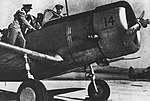Lawrence Livermore National Laboratory
Lawrence Livermore National Laboratory (LLNL) is a federally funded research and development center in Livermore, California, United States. Originally established in 1952, the laboratory now is sponsored by the United States Department of Energy and administered privately by Lawrence Livermore National Security, LLC.The lab was originally established as the University of California Radiation Laboratory, Livermore Branch in 1952 in response to the detonation of the Soviet Union's first atomic bomb during the Cold War. It later became autonomous in 1971 and was designated a national laboratory in 1981.A federally funded research and development center, Lawrence Livermore Lab is primarily funded by the U.S. Department of Energy and it is managed privately and operated by Lawrence Livermore National Security, LLC (a partnership of the University of California, Bechtel, BWX Technologies, AECOM, and Battelle Memorial Institute in affiliation with the Texas A&M University System). In 2012, the synthetic chemical element livermorium (element 116) was named after the laboratory.The Livermore facility was co-founded by Edward Teller and Ernest Lawrence, then director of the Radiation Laboratory at Berkeley.
Excerpt from the Wikipedia article Lawrence Livermore National Laboratory (License: CC BY-SA 3.0, Authors).Lawrence Livermore National Laboratory
South Vasco Road, Livermore
Geographical coordinates (GPS) Address External links Nearby Places Show on map
Geographical coordinates (GPS)
| Latitude | Longitude |
|---|---|
| N 37.69 ° | E -121.71 ° |
Address
Lawrence Livermore National Laboratory
South Vasco Road
94550 Livermore
California, United States
Open on Google Maps






